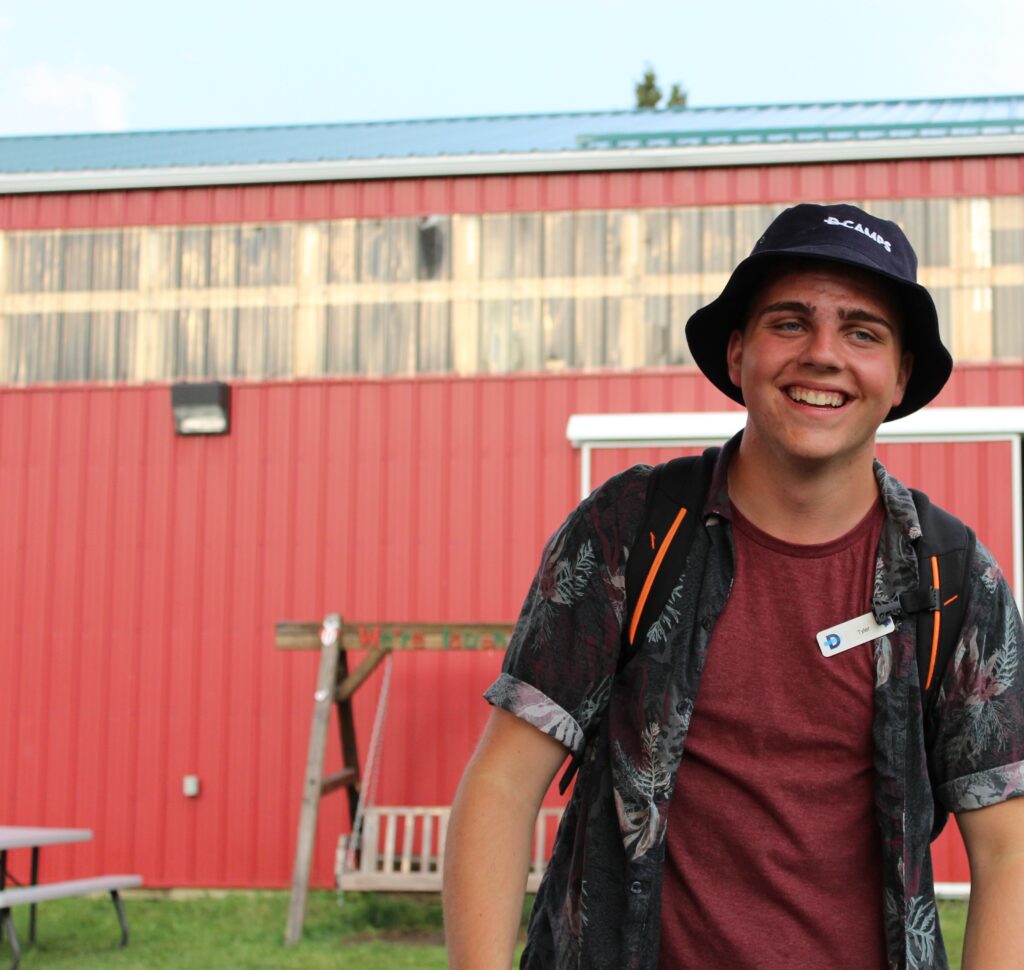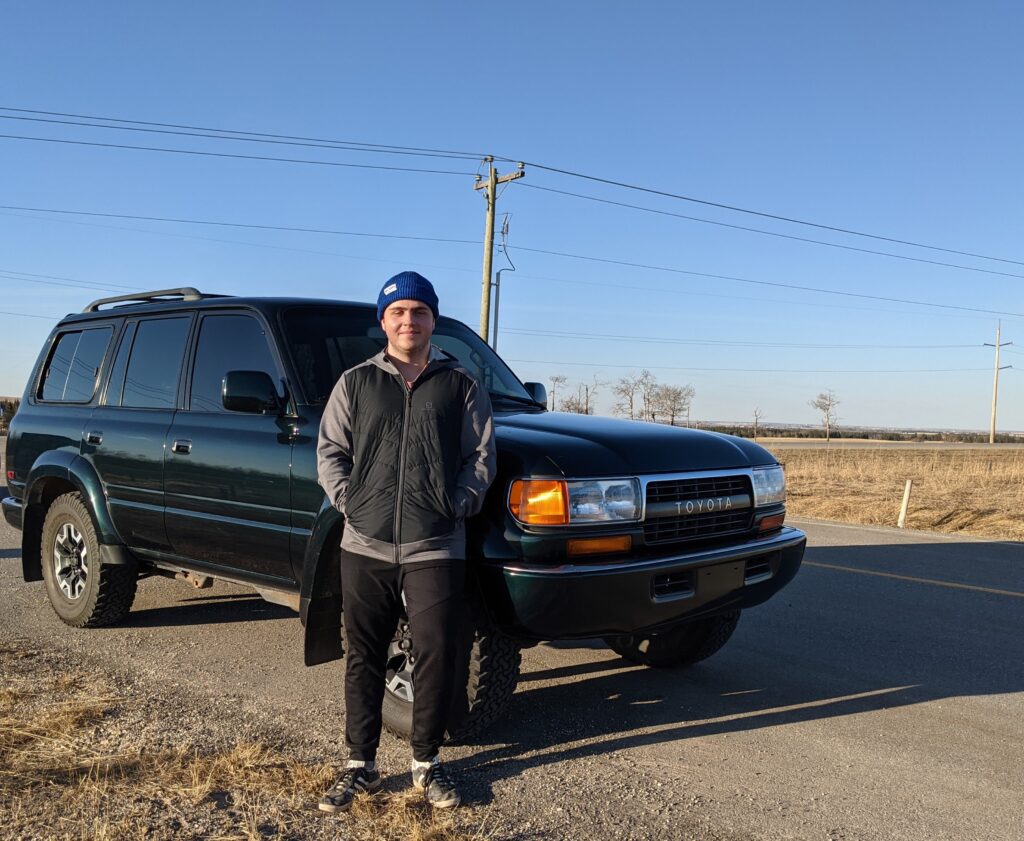Growing up in Fairview, a small town in Northern Alberta, Tyler Fentie started making at a young age.

“I grew up around farms, so that’s where I got a lot of the tinkering, engineering, mechanic work experience, where I got really interested in taking things apart,” he shares.
He remembers one of his first projects back in elementary school, a hovercraft device using a leaf blower and plywood that he saw on Daily Planet (opens in a new window).
“It didn’t work at all, and it blew up a billion times,” he laughs.
Some of his earlier projects, however, were a bit more serious in nature. Diagnosed with Type 1 diabetes (opens in a new window) at seven years old, and frustrated with the one-size-fits-all nature of many of the devices he needed in day-to-day life, he innovated his own solutions.
A competitive snowboarder when he was younger, Tyler designed clips for his insulin pump that didn’t pinch as bad when he was doing tricks.
Fast forward a few years and now he’s a mechanical engineering student, with a focus on biomedical engineering, at the University of Alberta (opens in a new window) in Edmonton.
When he learned about Makers Making Change (opens in a new window), the goal of designing devices as a collaborative process with people with disabilities rather than just coming up with one-size-fits-all solutions really appealed to him. 
“Designing with people with disabilities, rather than for them, is a big thing that’s important to me,” he explains. “And seeing Makers Making Change have that everywhere across their website, it’s always the user requests the device, and the volunteer works with the user, it’s never volunteer builds something and user maybe likes it — it’s always user focused which is really cool.”
After joining the Makers Making Change team, Tyler initially focused on outreach in Edmonton, developing connections with local disability organizations, growing the volunteer base, really building MMC’s presence in Edmonton.
“That’s been the biggest success, being able to bring makers to Edmonton in a large way,” he says.
Recently, he’s been working on putting more 3D printed Braille (opens in a new window) devices in the Assistive Device Library (opens in a new window), providing more options for people with limited vision.
“Braille’s kind of going away in a sense, but some people really like it. For example, the slate and stylus set (opens in a new window) — how you actually write Braille — those basically don’t exist anymore, or if they do, they’re really expensive because not very many people use it. But people still do use it, so it’s nice to have a couple of options for them.”
Making and D-Camps
Recently, Tyler made a video bridging two causes he’s passionate about — making and D-Camps (opens in a new window), a summer camp for children with diabetes.
“I got into the camp like two weeks after I was diagnosed, which genuinely, not figuratively at all, saved my life,” Tyler shares. “They really taught me how to count carbs, how to administer insulin, the whole [thing], like I got a crash course in a week on how to do that, with being in a community of Type 1’s.”
Later, he became a camp counselor.
When D-Camps offered virtual STEM programs, he jumped at the opportunity to bridge the two worlds together, introducing campers to the world of making and Makers Making Change — a natural fit.
“One of the things I tried to push was for STEM related things, because when you live with Type 1 or you live with any disability, you’re going to run in with problem solving every single day, so you’re almost like a natural born problem solver,” he says.
“I think that there’s a lot of devices on our website that kids can build very easily, and more schools are getting 3D printers.”
Thank you to the Edmonton Community Foundation (opens in a new window) for providing financial grants to make this work possible.
This post originally appeared on the Makers Making Change (opens in a new window) website.
